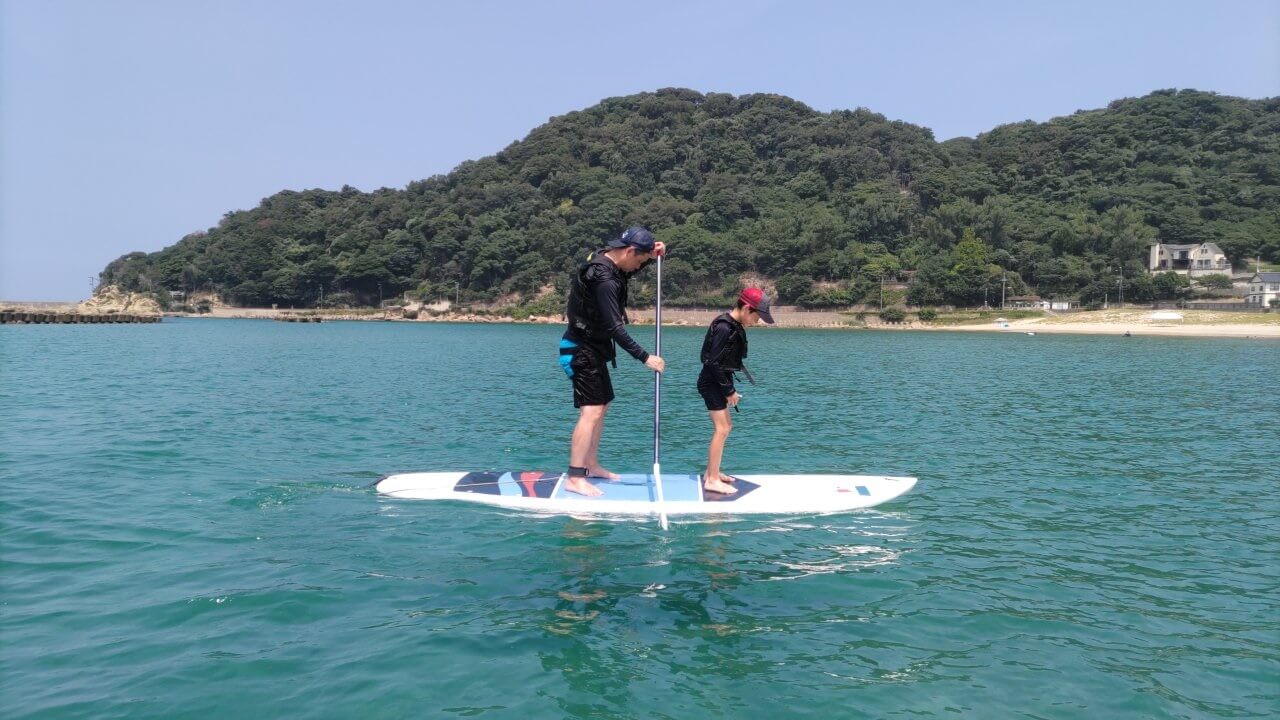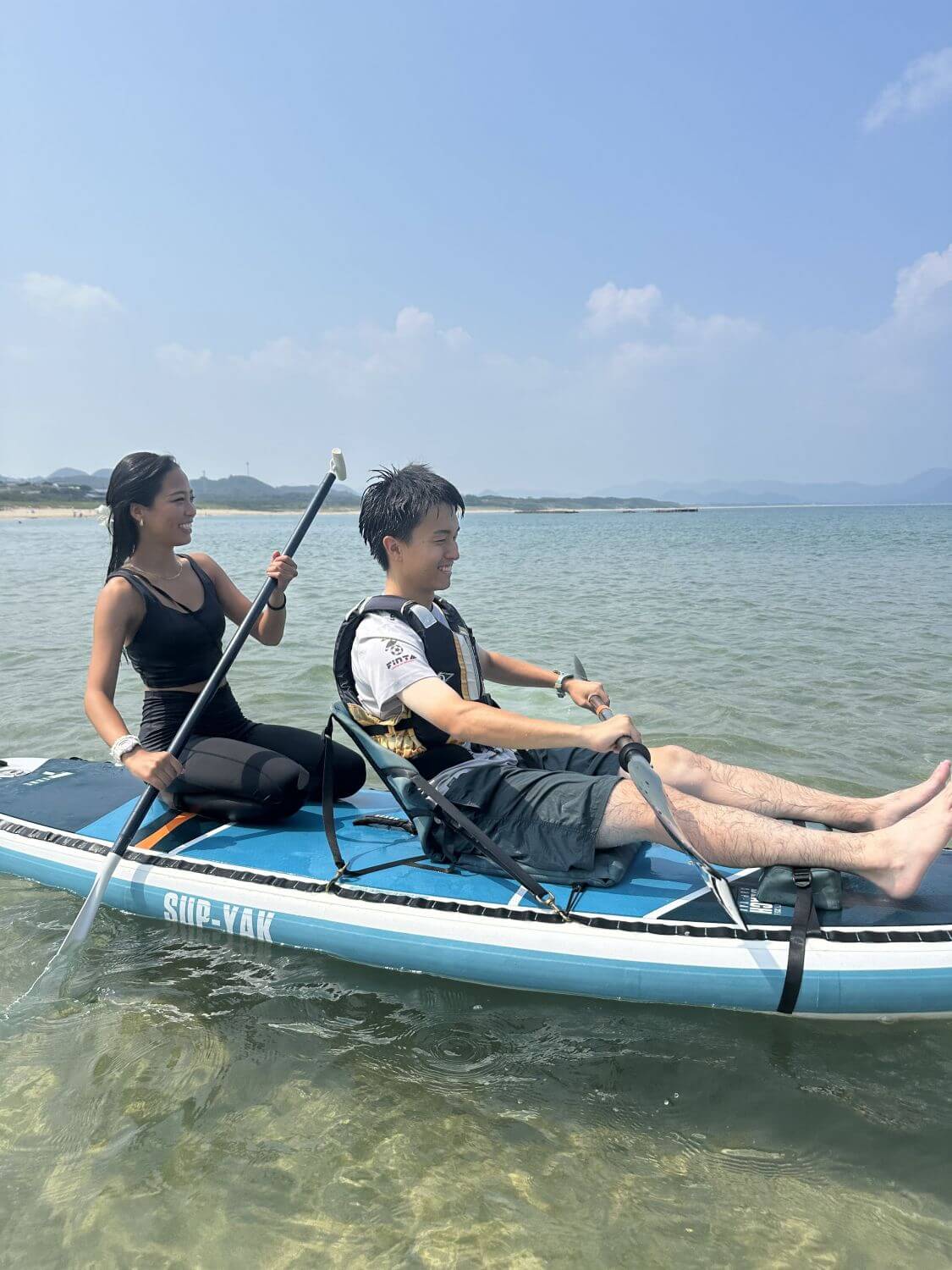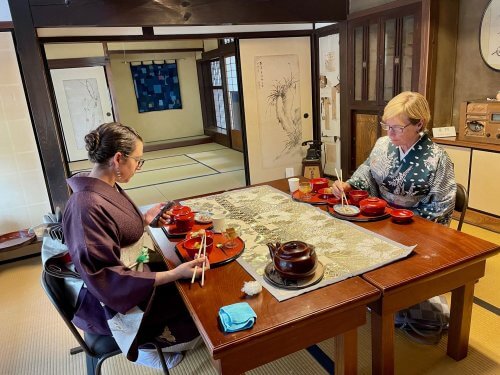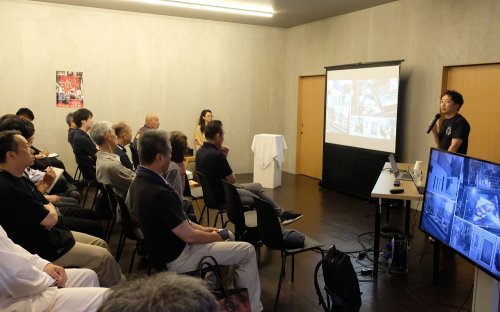Spread the Word: Universal SUP Experience it in the Sea of Kyotango Easily Accessible for Seniors and People with Disabilities
Stand-up paddleboarding (SUP) involves standing on a paddleboard and moving across the water’s surface. It has spread nationwide as a marine sport, and it can be experienced in northern Kyoto Prefecture. Hearing that there was a “universal SUP experience” where elderly people and people with disabilities could enjoy the sea together, a reporter (Keiki Takakuwa) tried it out in Kyotango City.

The sunset coast of Hamazume in Amino-cho, Kyotango City, is surrounded by crystal clear, emerald green waters. Although I have not been a strong swimmer since childhood, I decided to try regular SUP.
I put on a life jacket handed to me by Tatsuya Ishikawa (61), a representative of “Kyotango 135. EAST,” a sole proprietorship that offers marine sports experiences. I took one of the boards lined up along the shore to the water’s edge and entered the sea. I carefully stepped onto the board, floating in water about waist-deep.
Next, I assumed a stable kneeling position and began paddling. Once I gained enough momentum, I shifted my kneeling stance, then finally stood up. Speed brought stability, but I capsized several times when I let my guard down. Balancing and paddling on the board proved challenging, making me realize firsthand how difficult it is for seniors and people with disabilities.
Last year, driven by the desire for “families to enjoy the sea together, regardless of disability or age”, Mr. Ishikawa launched a new “Universal SUP Experience.”

The board provided had a seat attached. In a regular SUP, you stand on the board floating on the water. Here, you sit on the seat with a backrest, legs extended. It’s more stable than a regular SUP, allowing for a comfortable and secure ride.
For those who find it difficult to use the board with the attached seat, there was also a “water-floating wheelchair.” It resembles a beach chair with three yellow tires attached. It’s amphibious, and its thick tires, about 20 centimeters wide, prevent the wheels from sinking into the sand like a regular wheelchair would.
With an instructor pushing, participants can enter the water directly from the beach while remaining in their wheelchair. As the water deepens and the tires lift off the bottom, they experience the sensation of floating on the water. Floats large enough to comfortably support the arms from the elbows down are attached to both sides of the wheelchair, eliminating any fear of capsizing.

Feedback from users of the floating wheelchair has been positive. Mr. Hiromichi Sakai (75), from Amino-cho in the same city, who lost use of his left side after a cerebral hemorrhage three years ago, used the floating wheelchair this summer to enjoy swimming with his two elementary school-aged grandchildren. “I wanted to go in the sea but was anxious. Being able to enter the water at the same eye level as my grandchildren was the best part,” he said with a smile.
The content of the Universal SUP experience is tailored to each participant. Mr. Ishikawa expressed his hopes: “I’d be delighted if everyone could participate together and enjoy it.”
The experience runs until the end of September.
Support Initiatives Nationwide
_____________________________________________________________________________________________________________
Efforts like Universal SUP, enabling everyone to enjoy the outdoors, are spreading nationwide.
The NPO Suma Universal Beach Project, based in Kobe City, supports wheelchair users enjoying the beach.
They lay down beach mats measuring 1.5 meters wide and 10 meters long to allow wheelchair users to reach the water’s edge, and have introduced amphibious beach chairs, making it possible for wheelchair users to safely and comfortably use the beach.
The number of beaches accessible to people with disabilities is increasing nationwide. The number of beaches awarded the Blue Flag Certification – given to beaches meeting 33 criteria including “access and facilities for people with physical disabilities” – grew from just two nationwide in 2016 to twelve today.
Efforts to support outdoor activities for wheelchair users extend beyond the sea as well.
Auto Tech Japan Co., Ltd. (Tochigi Prefecture) is collaborating with tourism operators in Nagano Prefecture to develop an outdoor-ready electric wheelchair.
They aim to have wheelchair users operate this new model, capable of traversing rough terrain like forests and marshes, stating, “We strive for a society where people can enjoy nature together with their families.”
Copyright © Kyoto Shimbun
Translated by Kyotango City Tourism Association



